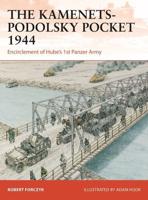Publisher's Synopsis
Japan attached British-ruled Malaya on 8 December 1941 as part of a wave of military actions that toppled the British, Dutch and American colonial regimes in Southeast Asia. Within seventy days, the conquest of Malaya was complete, and British forces in Singapore surrendered on 15 February 1942.
The three and a half years of Japanese rule are generally considered to mark a profound transition in the history of the Malay peninsula, but little is known about this period. Fragments of information seeped out during the occupation: the few people who made their way to China were interrogated, as were the crews of junks captured at sea, and the information accumulated from these sources was matched against material from Japanese radio broadcasts.
This book uses the limited administrative papers that survived in Malaya, oral sources, and accounts written by Japanese officers involved in the Malayan campaign to flesh out the story. From these sources a picture emerges of a country abruptly deprived of a vibrant economy and struggling in the face of shortages of consumer goods, unemployment, high prices, a thriving black market and widespread corruption. Conditions worsened as time passed. By 1944 the effort to maintain pre-war standards of comfort had for many people given way to a grim battle for survival. People were hungry, dressed in rags, and falling victim to diseases for which treatment was no longer available.
Since the ordeal of the occupation, Malaya has undergone a series of political and economic changes. It can certainly be argued that the Japanese period served as a catalyst in this process, but in itself the occupation gave rise to little that endured. The origins of the course Malaya has followed since are to be found in the initiatives of the local population and the policies of the British administration.











